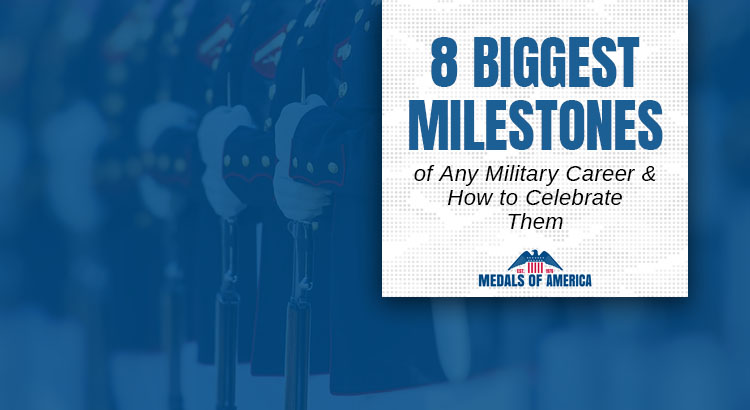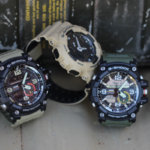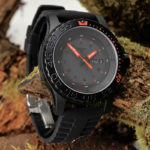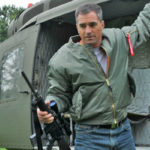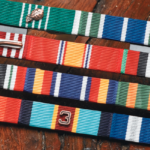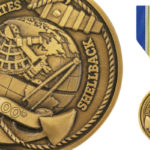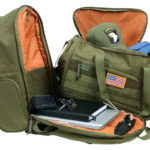When it comes to a military career, there are thousands of jobs, and each one plays an important role. Each specialty in the military comes together like the parts of a finely tuned machine to ensure the entire unit is operating as one.
But many of us underestimate our career achievements, and service men and women are typically taught to be self-effacing. Being humble doesn’t mean you shouldn’t be proud of your career milestones and your military medals. So, we’re taking this opportunity to highlight some of the biggest possible milestones in a military career and how to celebrate them.
1. Taking the Oath and Graduating Boot Camp
Federal law requires that everyone who enlists and re-enlists in the Armed Forces takes the Oath of Enlistment. For recruits, this officially marks the beginning of your military career and can be an emotional and significant moment in your and your family’s lives. Your family and friends are welcome to attend the swearing-in ceremony, which is administered by a commissioned officer for a specific term of service in any branch of the military. The oath is performed in front of the flag of the United States, the state flag and the military branch flag. If you are re-enlisting, the unit guidon flag may also be present.
Graduating from basic training is a momentous accomplishment and an important occasion in your life, and it is one that your entire family should be there to see. Since there are no formal invitations to the event, anyone in your family can share in your achievement, including children.
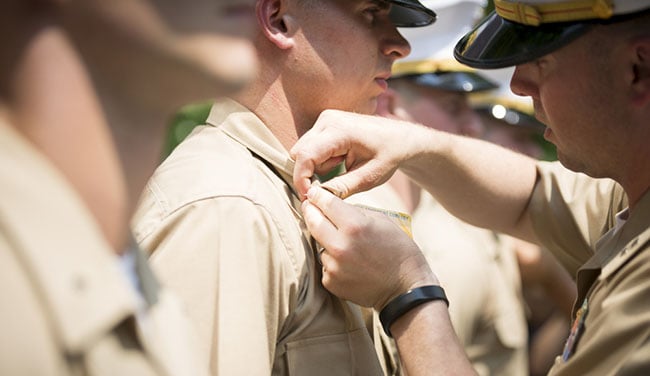
Service members are discouraged from public displays of affection while in uniform, but a quick hug is okay to recognize your accomplishment. Remind your guests to abide by ceremony protocols, such as standing for the national anthem and encourage them to take lots of photographs or videos of this incredible and patriotic moment in your life.
Some military posts also have a family day before graduation so your family can spend time with you before the ceremony—because immediately following graduation you begin your career!
2. Getting Commissioned
There are several routes to becoming a commissioned officer in the United States military. Whether it is through an ROTC program, Limited Duty Officer Program (LDO), Officer Candidate School (OCS), a Military Academy or another avenue offered by a specific branch, it is a proud and emotional moment in your life.
Your commissioning can be as ceremonial or as simple as you like. After the national anthem, an officer will administer the oath in front of the United States flag and state flag, and you will sign the contract. Your family is encouraged to attend the ceremony, and a family member will pin your boards onto your uniform, and then, typically, an enlisted mentor will give you your first salute. In exchange, you will give them a silver dollar. Once the commissioning is complete, you are free to enjoy family time with your guests.
3. Chief Petty Officer Initiation and Pinning
Earning the rank of Chief Petty Officer is a huge accomplishment and achieving it comes with some rituals that are a rite of passage and steeped in tradition. Being selected as a CPO means the rating exams are behind you, but the real tests lie ahead because E-7s are considered the backbone of the navy, and this promotion is regarded as a tremendous honor.

For the six weeks following your selection to join the coveted senior enlisted ranks, you are mentally and physically challenged before being not only recognized as an E-7 but also being accepted as a chief.
To prepare for the additional expectations and responsibilities the rank of E-7 in the navy entails, sailors must complete CPO 365 Phase II, which is led by other CPOs.
This phase includes welcoming, inspiring, motivating, and instilling trust in the chief selectees while promoting unity, building teamwork, teaching leadership and having fun. Activities include physical fitness, learning about naval heritage and participating in community projects.
There are also educational requirements, such as the 3-day CPO Selectee Leadership Course and a course that teaches the CPO creed, which come together in a capstone event the evening before the pinning ceremony. The selection process ends with a formal advancement ceremony, where a family member gets to pin the gold fouled anchor on your uniform. This promotion is a big event and, typically, families host large celebrations to honor the newly pinned CPO.
4. Earning a Fleet Marine Force Insignia
Like everything else in the military, the Fleet Marine Force (FMF) pin is earned through plenty of hardship and study. The coveted pin is an extension of the Marine Corps’ eagle, globe, and anchor adorned with a wave crashing on a beach that signifies the sands of Iwo Jima. Two crossed rifles lie behind the globe, symbolizing the rifleman’s ethic.
The Department of Defense established this award to recognize Navy personnel assigned to Fleet Marine commands. There are three types of Fleet Marine Force insignias: the FMF Officer, an enlisted FMF Warfare Specialist, and the FMF qualified officer.
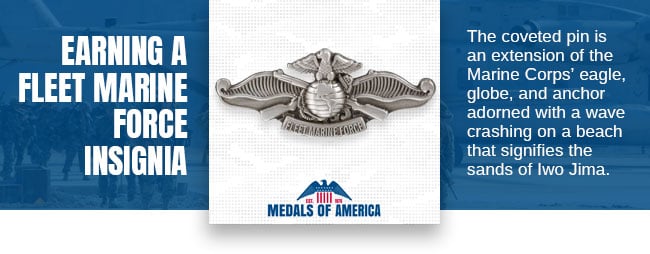
The latter, the FMF qualified officer ribbon, is only issued to Navy Chaplains who meet the criteria for the award. The ribbon has a distinctive insignia without the crossed rifles.
The FMF Officer badge has the most demanding criteria of the three. An officer must serve 12 months consecutively in a Marine Corps operating forces command. The position must require deployment for at least 179 days with the command, during combat or an overseas contingency operation.
Most enlisted personnel who earn the ribbon either have Hospital Corpsman ratings or are Religious Program Specialists on Type 2 or Type 4 sea duty. The sailor must serve 12 consecutive months with a minimum of 90 successive days supporting a Marine combat or peacekeeping operation.
Other enlisted personnel can earn the FMF designation by assignment to the Fleet Marine Force for 12 months and participation in forward field operations.
The unique part of earning this badge is that only Commanding Generals or Commanding Officers of Marine Corps commands can approve the award.
Earning the FMF pin is a huge honor because it can only be earned by sailors when forward deployable with Marines. The pinning ceremony typically begins with the CO making a few remarks in front of the United States and Marine flags. Then a family member, or one of your marine brothers, places the pin on your uniform before you receive the award certificate. Once the CO closes the ceremony, you can take photographs before celebrating with your family and friends.
5. Ranger Tab
The Army’s Ranger school began in 1950 and is considered one of the toughest military courses of all the armed forces schools. The course concentrates on small unit tactics and leadership.
Infantry Officers, unofficially, will likely not get promoted to the upper echelon of the infantry officer ranks without a Ranger Tab. Because of this, the infantry provides officers assigned to this branch many opportunities to attend the course.
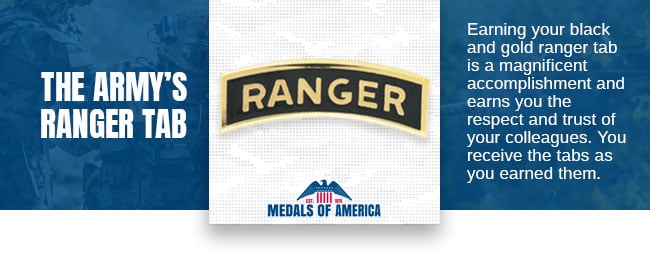
Some officers have gone through six or more times before finally earning the badge, while many others never make it successfully through all phases of the course.
Physically and mentally grueling, the course has three phases:
Phase I
Phase I, the Benning Phase, teaches squad operations, focusing on reconnaissance and ambush missions. Phase I is broken down into two parts: The physical or ranger assessment phase, known as RAP, and the patrolling phase, known as Darby Phase. Physically grueling, less than 50% of the applicants pass Phase I, according to the Department of the Army.
Phase II
Phase II, the Mountain Phase, takes place in the mountains of North Georgia. Skills practiced include mountaineering, mobility and employing platoons for continuous combat operations in mountainous areas. Ranger applicants hone their abilities to lead platoon-size units while executing a variety of combat patrol missions. During the 10 days of combat patrol training, the students must conduct vehicle and personnel ambushes and lead raids on communication and mortar sites.
Phase III
The Swamp Phase is the final part of the training. This phase takes place in the coastal swamps along the Florida panhandle at Camp Rudder on Eglin Air Force Base.
During this last part of the training, students continue small unit tactics under highly stressful and realistic training environments. This part of the training includes 10 days of patrolling and conducting raids ambushes and even urban assaults. Successful completion of this phase and the course requires a student to complete the mission and receive positive peer evaluations without too many negative spot reports by the instructors.
Earning your black and gold ranger tab is a magnificent accomplishment and earns you the respect and trust of your colleagues. You receive the tabs as you earned them, as members of a tightly knit and successful team in a Ranger Training Brigade Ceremony. Family members are invited to help you celebrate and pin the tab on your uniform.
6. Expert Infantryman Badge (EIB)
Only officers and enlisted personnel with a military occupational specialty (MOS) of infantry can test for the Expert Infantryman Badge. General George C. Marshall implemented the award of the badge in 1944 as a way of recognizing the skills and physical fitness minimums required of the infantryman.
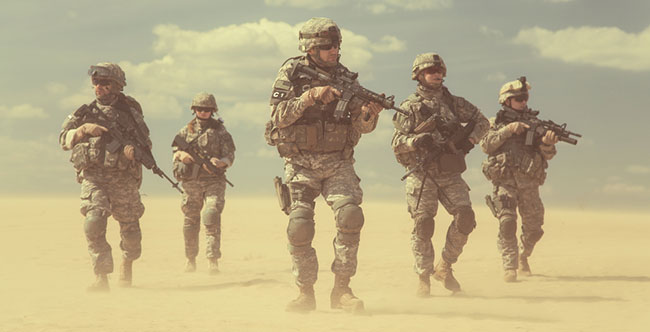
Earning the badge instills pride and prestige to a job that requires working and training under challenging conditions.
Every EIB candidate must pass the APFT, a day and night land navigation course, and spend three days rotating through 30 consecutive stations: 10 on weapons, patrolling and medical care. According to the U.S. Army Maneuver Center of Excellence, only 14% of participants earn the EIB.
EIB recipients are true warriors because they achieve a milestone not every infantryman can earn. The tabs are typically pinned by an immediate superior—for example, squad leaders are pinned by platoon sergeants—but family members can also place the pin. This is another significant accomplishment that can be celebrated with your peers or your family.
7. Explosive Ordnance Disposal (EOD)
The military considers EOD assignments some of the most dangerous in peace or wartime. Soldiers who earn an EOD badge receive spend 6-9 months or more in training. Training includes a variety of bomb and explosive disarming techniques, fuses and bomb training, missile system deactivation, use of plastic explosives and much more.
EOD specialists learn how to disarm and safely dispose of conventional, chemical, biological and nuclear weaponry. Safely disarming or detonating Improvised Explosive Devices (IEDs) is also a large part of the training.
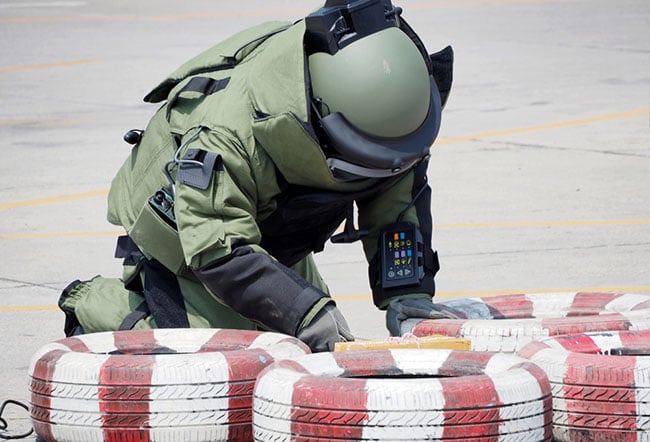
Navy EOD specialists undergo dive and underwater demolition training in addition to basic bomb disposal.
The basic EOD badge is awarded after successful completion of the basic course and 18-24 months of on-the-job training. The Senior EOD badge requires 3-5 years serving as an EOD specialist. The Master Explosive Ordnance Disposal Badge requires a minimum of 7 years in a senior supervisory position in an EOD unit.
Pinning on the basic EOD badge involves a formal and informal ceremony where classmates get together at whatever has been the local hangout, but Senior and Master EOD badge celebrations are usually very close-knit affairs, attended by the relatively small group of EOD professionals.
8. Army Aviation Wings
You must not only pass a specialized flight physical but also score high on the flight aptitude test before the Army considers you ready for flight training. Once accepted, the Initial Rotary Wing Course lasts 32 weeks, broken up into four phases. By the end of the course, you will have at least 149 hours of actual flight time and 179 hours in a flight simulator.
Phase I
The first two weeks of preflight instructions cover topics such as weather, basic aerodynamics and start-up procedures.
Phase II
Phase II lasts 10 weeks. The student receives 60 flight hours in a training helicopter, where he or she learns the basics of flight, including making their first solo flight.
Phase III
During Phase III, which is 8 weeks long, the student has another 20 hours of practice time in the TH-67 training helicopter and 30 hours using a flight simulator. This phase includes more instrument training and FAA navigation requirements for using federal airways.
Students receive a helicopter instrument qualification certificate at the end of this phase.
Phase IV
Phase IV concentrates on combat flying. This training includes piloting the OH-58 A/C helicopter, used as an aeroscout.
Night flying, including the use of night vision goggles under tactical conditions, is also part of this phase.

Celebrations after a student earns his or her wings can take many forms, including a barbecue or unit dinner, or something a bit more intimate attended by close friends.
Final Thoughts
As a military serviceman or woman, your job and accomplishments are significant. Whether stateside or deployed, you experience adversities and are continually training to improve your knowledge and experience in your field so our great nation can enjoy the freedoms you safeguard.
Each time you earn an award, stand proud, celebrate, and wear your U.S. military medals with honor.
